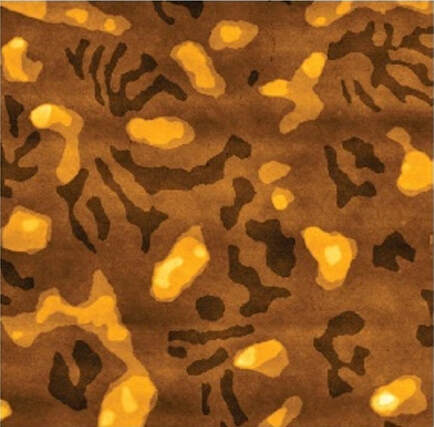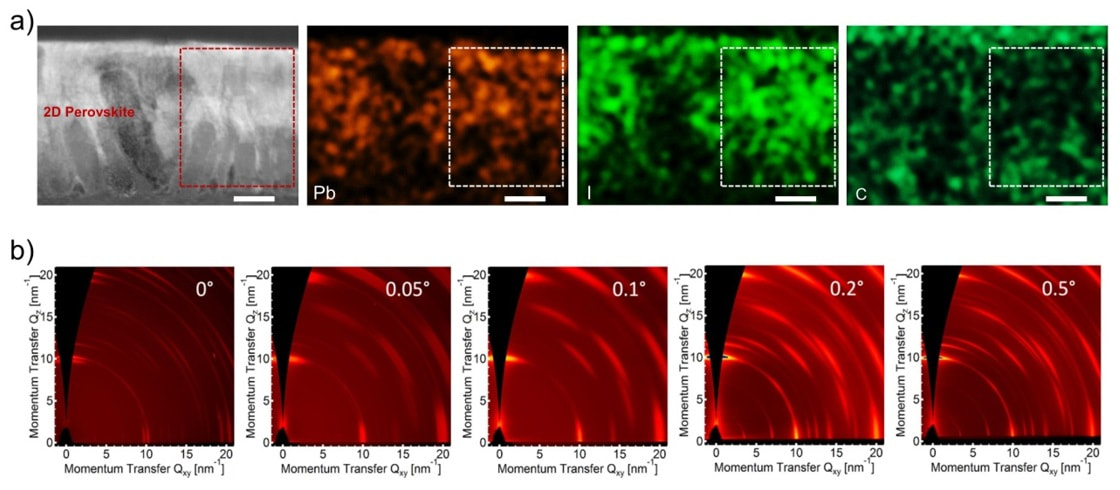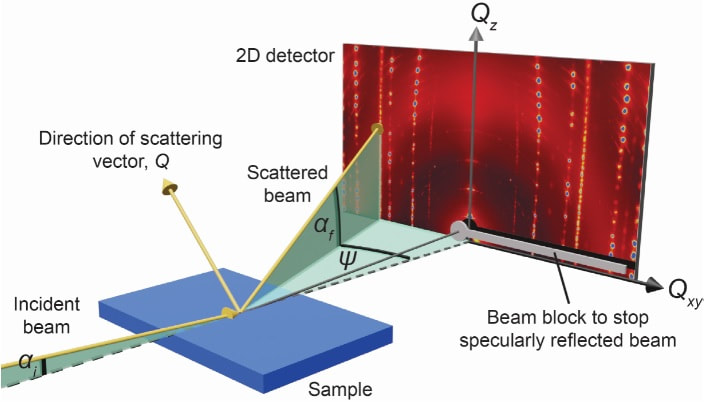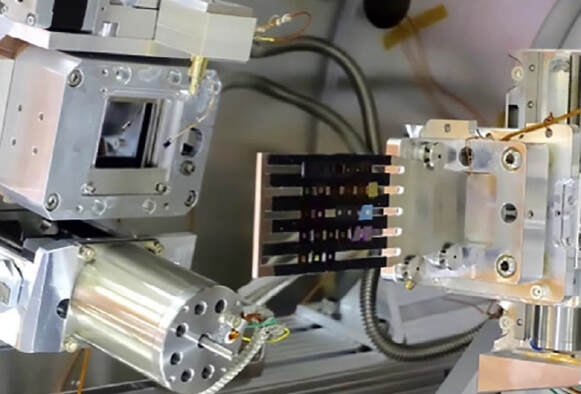Research.
In the McNeill research group we are generally interested in understanding how the microstructure of solution-processed semiconductors determines their function in solar cells and field-effect transistors. We make and test semiconductor devices and like to use synchrotron facilities to probe thin-film microstructure.
Organic Electronics
Organic semiconductors are carbon-based molecules and polymers that have optical and electronic properties similar to traditional semiconductors such as silicon. Organic semiconductors derive their properties from alternating single and double bonds that facilitates electron delocalisation. Through synthetic chemistry it is relatively easy to make a new organic semiconductor simply by changing the molecular structure of the material enabling tuning of the optical bandgap, molecular packing and other properties.
Thin films of organic semiconductors are also relatively easy to prepare as many organic semiconductors can be dissolved and deposited using solution coating techniques such as spin-coating, ink-jet printing and blade coating. This ease of coating makes future technologies based on the low-cost printing of organic semiconductor films on flexible substrates possible. Two applications of organic semiconductors which are of interest in our group are polymer solar cells and organic field-effect transistors.
Thin films of organic semiconductors are also relatively easy to prepare as many organic semiconductors can be dissolved and deposited using solution coating techniques such as spin-coating, ink-jet printing and blade coating. This ease of coating makes future technologies based on the low-cost printing of organic semiconductor films on flexible substrates possible. Two applications of organic semiconductors which are of interest in our group are polymer solar cells and organic field-effect transistors.
Polymer Solar Cells
The efficiency of polymer solar cells has increased rapidly in recent years with the record power conversion efficiency now exceeding 15%. Compared to silicon solar cells polymer solar cells are a much newer technology and there still remains much to be understood about device operation and how it relates to material properties. Research focuses in the McNeill research group include understanding the device physics of polymer solar cells, understanding how the microstructure of polymer blends used in solar cells affects device performance, and the development electron accepting polymers for high efficiency all-polymer solar cells.
Organic Field-Effect Transistors
Transistors are at the heart of every electronic device. Organic field-effect transistors (OFETs) will not be able to compete with high-performance silicon transistors but have advantages over silicon transistors in that they can be fabricated more cheaply and can be incorporated into flexible electronic devices. The last 5 years has seen rapid increases in mobility with mobilities of over 10 cm²/Vs now demonstrated for solution processed films (10 – 100 times higher than amorphous silicon). As the operation of OFETs is sensitive to film microstructure a key focus of the McNeill research group is using advanced x-ray techniques to measure thin film crystallinity and molecular orientation and relate these properties to OFET operation.
Perovskite semiconductors
Perovskite semiconductors are another interesting type of solution-processable semiconductor. They have a ABX₃ perovskite crystal structure, typically consisting of an organic cation surrounded by a PbX₃ octahedra with X = I, Br, or Cl. Perovskite solar cells can achieve power conversion efficiencies of 25%, close to that of silicon, and the properties and microstructure of perovskite films can be tuned by varying the organic and halide constituents. In the McNeill Research Group we are particularly interested in understanding how the thin film microstructure of solution-processed perovskite films, with a particular focus on synchrotron techniques for in-depth analysis.
Structural Characterisation
At Monash University we are lucky to have the Australian Synchrotron located just across the road. The high-brightness, polarised x-rays available only at a synchrotron provide a unique perspective to study the microstructure of organic and perovskite semiconductor films. Synchrotrons also enable the evolution of microstructure during solution coating or annealing to be studied in real time. Two techniques we utilise at the Australian Synchrotron are grazing-incidence wide-angle x-ray scattering (GIWAXS) which probes the crystallinity of thin films and near-edge x-ray absorption fine-structure (NEXAFS) spectroscopy that enables us to assess the molecular orientation of the top surface of organic semiconductor films.
As well as using the Australian Synchrotron we also like to travel to international synchrotrons such as the Swiss Light Source (SLS), the Advanced Light Source (ALS) in California and the National Synchrotron Light Source II (NSLS-II) on Long Island, NY to perform other x-ray techniques not available at the Australian Synchrotron. In particular at the SLS we use their x-ray microscope to map the domain orientation of polycrystalline organic semiconductor films used in OFETs, while at the ALS and NSLS-II we exploit resonant soft x-ray scattering techniques to determine the nanoscale domain size of polymer blends used in organic solar cells.




